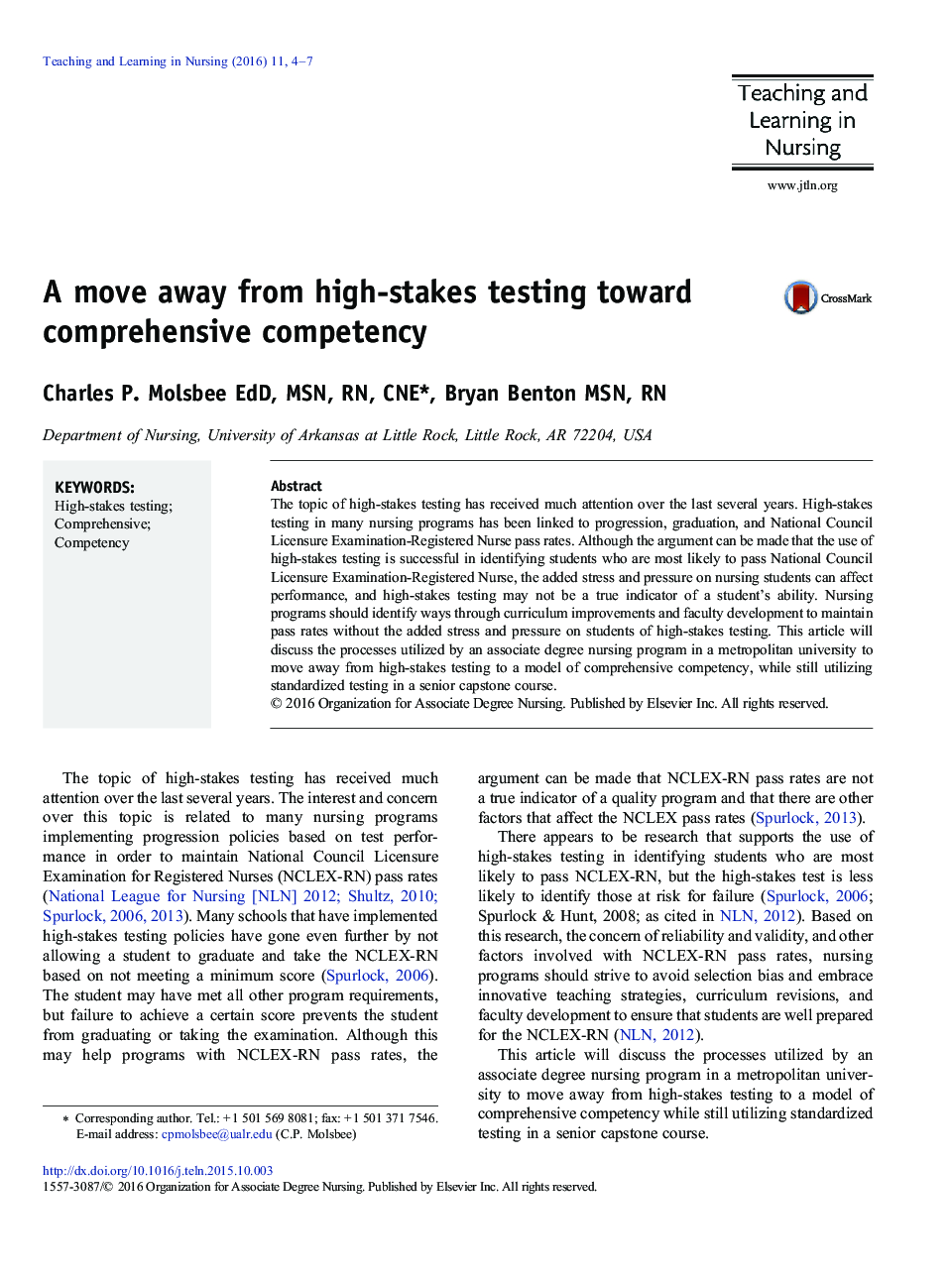| Article ID | Journal | Published Year | Pages | File Type |
|---|---|---|---|---|
| 2677497 | Teaching and Learning in Nursing | 2016 | 4 Pages |
The topic of high-stakes testing has received much attention over the last several years. High-stakes testing in many nursing programs has been linked to progression, graduation, and National Council Licensure Examination-Registered Nurse pass rates. Although the argument can be made that the use of high-stakes testing is successful in identifying students who are most likely to pass National Council Licensure Examination-Registered Nurse, the added stress and pressure on nursing students can affect performance, and high-stakes testing may not be a true indicator of a student's ability. Nursing programs should identify ways through curriculum improvements and faculty development to maintain pass rates without the added stress and pressure on students of high-stakes testing. This article will discuss the processes utilized by an associate degree nursing program in a metropolitan university to move away from high-stakes testing to a model of comprehensive competency, while still utilizing standardized testing in a senior capstone course.
